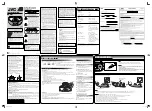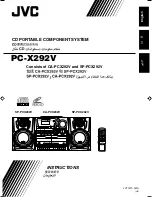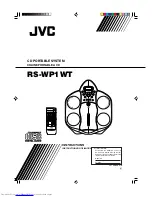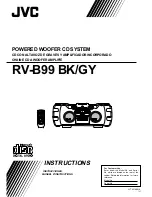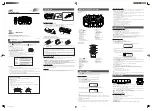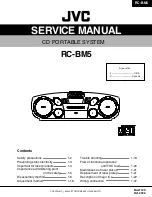
OPERATION
PREPARING WORK
Thickness planers work best when at least one side of the lumber is flat. Use a surface planer or a jointer to create
a flat surface. Twisted or severely warped boards can jam the planer and should not be used. Rip lumber in half to
reduce the magnitude of warpage.
Work should be fed into the planer in the same direction as the grain of the wood. Sometimes the grain will change
direction in the middle of the board. In such cases, if possible, cut the board in the middle before planing, so that
the grain direction is correct. Always plane with the grain.
WARNING!
Never plane against the grain direction of the wood. Do not plane end grain, as the wood could
splinter or possibly explode.
WARNING!
Do not plane any board shorter than 14-1/2”; the force of the cut could split the board and cause
kickback.
CHECK FOR WORN BLADES
The blades’ condition will affect cutting precision. Observe the quality of the cut that the planer produces to check
the condition of the blades. Dull blades will tear wood fibers and produce fuzzy surfaces. Raised grain will occur
when dull blades pound on wood that has varying density. Raised edges will also be produced where the blades
have been nicked. The blades on this planer are adjustable. Keeping a spare set of blades on hand is recommended.
Replacement blades can be ordered from
wenproducts.com
(model numbers
BP133K and BP133M
).
AVOIDING SNIPE
Thickness planers tend to leave a small bit of snipe at the end of the planed boards, particularly for longer work-
pieces. Snipe is a small dip that is caused by the board’s own weight pulling one end downwards as the board enters
or exits the planer, thus pushing the other end into the cutterhead and creating an uneven finish. Snipe will occur
when boards are not supported properly, or when only one feed roller is in contact with the work at beginning or
end of cut.
The best way to avoid snipe is to cut your workpiece long enough that you can saw off the snipe after the board has
been planed. Leave 1” to 2” on both ends so it can be removed later. Other, less efficient methods include gently
pushing the board up while feeding the work until the outfeed roller starts advancing it. Then, move to the rear and
receive the planed board by gently pushing it up when the infeed roller loses contact with it. The third option is to
have another dummy board flush against the beginning and end of the workpiece. That way, this piece of scrap
wood will be the recipient of all of the snipe. Snipe is more apparent when deeper cuts are taken. Lower depths help
prevent snipe.
It is also recommended to have the infeed and outfeed extension tables slightly inclined upwards to form a V shape,
with the difference between the outermost edges of the extension tables and the center of the main table being about
1 mm (see p. 10 for adjustments).
14






























